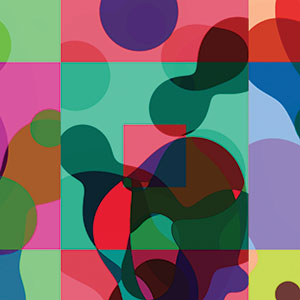Arts
Photo Shop
 PARADIGM SHIFT: Clive McCarthy’s ‘Electric Paintings’ is a commentary upon and challenge to the ubiquity of digital photography.
PARADIGM SHIFT: Clive McCarthy’s ‘Electric Paintings’ is a commentary upon and challenge to the ubiquity of digital photography.
The paintbrush has a mind of its own in Clive McCarthy's series of "Electric Paintings." Sitting in the gallery's semi-darkness in front of Painting the Internet (is worse than dial-up), an invisible hand scribbles brush strokes across a digital canvas. The video screen fills up with colors and textures until a scene completes itself.
Then the image is erased and a new painting starts to fill up the screen. The experience is as soothing as watching fish swim by in an aquarium. Of course, it's McCarthy's mind that programs the brush to move. It's a bewitching effect that suggests the presence of a ghost hidden in the room as well as in the machine.
McCarthy began his career as an engineer in Silicon Valley before he received an MFA from the San Francisco Art Institute. When he and I spoke on the phone, the artist explained that the two fields aren't dissimilar. For the creation of software, a book like Donald Knuth's The Art of Computer Programming established the idea that coding was, in fact, a form of art. "You are designing, imagining and making things," McCarthy says. "Designing chips is architecture, albeit an architecture that's invisible and conceptual."
But after 30 successful years of creating chips and software, he wanted a new challenge. Around 1998, he bought a 1 megapixel camera. He found that, instead of having to wait several days for the film to be developed, he could print the images himself. One thing led to another. He began to experiment with manipulating the photographs and he bought a wide-format printer. By the time he had a show in 2005 at the ICA, he was animating images. McCarthy describes his work back then as "a Ken Burns approach—moving still images across the screen, zooming in and out."
Most of the work in "Electric Paintings" is built upon his own photographs. The artist applies the coding he's developed and the photograph becomes, in time, a digital painting. Painting the Internet, though, is made of approximately 10,000 images that were randomly culled from the web. The quantity of photographs now available, he says, is overwhelming. The sheer volume, thanks in part to the ubiquity of cell phone cameras, has diluted the meaning of photographs. That phenomenon interests and disturbs him.
As an art form, photography has reached a stopping point, McCarthy suggests. He references a famous quotation attributed to the French artist Paul Delaroche (d. 1856), "From today, painting is dead." He made the statement after seeing one of the first Daguerreotypes. Ironically, that medium has now exhausted itself. As photography once disrupted painting, the omnipresent digital image is thoroughly disrupting photography. McCarthy says that Paul Delaroche was advocating for painters to try something new in response. In his electronic paintings, McCarthy is also attempting to create something new.
He's not alone. An irrefutable digital creep is slowly starting to seep into local exhibits. Petra Cortright's 6_v211132013 is a digital still life currently on display in the San Jose Museum of Art's exhibit "Almost Human." Her Photoshop painting doesn't move but the monitor it lives inside of suggests that, at any moment, something new will bloom. And in 2018, Pace Gallery exhibited video screens filled with flowers from teamLab's "Continuous Life and Death at the Now of Eternity." McCarthy believes that digital works like these are indicative of the ways in which artists will paint in the future.
McCarthy transforms photographs because he wants to give the viewer a chance to interpret them. To not be constrained by the specificity of a photograph's declarative statement. You can make out some recognizable human forms in the work but McCarthy's paintings veer easily into abstract territory. Collage 85 takes its cue from Josef Albers' color squares. It's a geometric puzzle with pieces that float about in the slowed-down gravity of outer space. The colors change and new pieces start to overlap and fit into place.
I asked the artist if the final paintings in the ongoing loop of Painting the Internet are saved. The answer was an unqualified, "No." "Electric Paintings" is an ephemeral exhibit. The images are in constant motion, escaping from the corners of your eyes, and then returning as something else—an addendum to infinity.
Clive McCarthy: Electric Paintings
Thru March 22, 2020, Free
San Jose Institute of Contemporary Art
sjica.org


